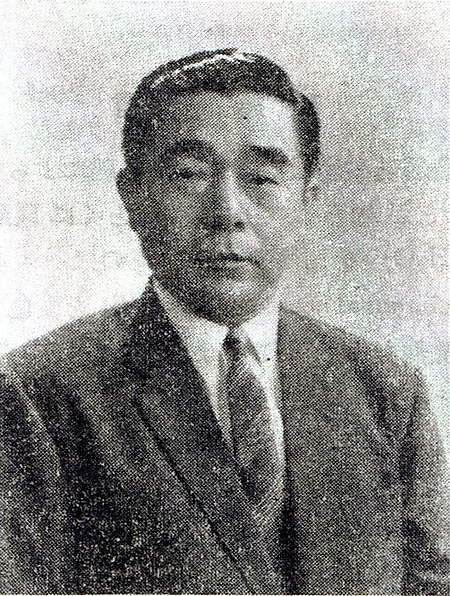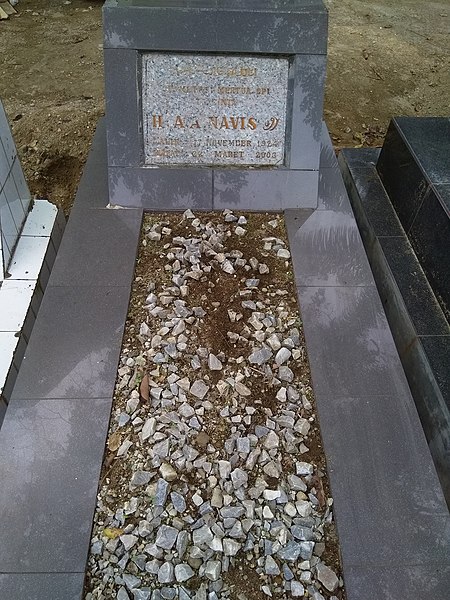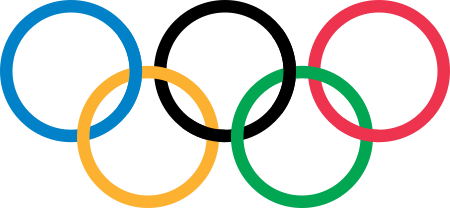Anagenesis
|
Read other articles:

American businessman and Secretary of Defense (1916–2009) This article is about the U.S. business executive and Secretary of Defense. For other uses, see Robert McNamara (disambiguation). Robert McNamaraOfficial portrait, 1961President of the World Bank GroupIn officeApril 1, 1968 – June 30, 1981Preceded byGeorge WoodsSucceeded byTom Clausen8th United States Secretary of DefenseIn officeJanuary 21, 1961 – February 29, 1968[1]PresidentJohn F. KennedyLyndon B. Johns…

Mechanism of evolution by differential survival and reproduction of individuals Natural Selection redirects here. For other uses, see Natural Selection (disambiguation). Natural selections redirects here. For the Brad Laner album, see Natural Selections. A diagram demonstrating mutation and selection Modern biology began in the nineteenth century with Charles Darwin's work on evolution by natural selection Part of a series onEvolutionary biologyDarwin's finches by John Gould Index Introduction M…

Cable-stayed bridge carrying northbound I-65 across the Ohio River at Louisville Abraham Lincoln BridgeThe Abraham Lincoln Bridge viewed fromthe Big Four Bridge, with the parallel John F. Kennedy Memorial Bridge in the backgroundCoordinates38°15′52″N 85°44′37″W / 38.26444°N 85.74361°W / 38.26444; -85.74361Carries6 lanes of northbound I-65CrossesOhio RiverLocaleLouisville, Kentucky and Jeffersonville, IndianaMaintained byKentucky Transportation Cabinet[1 …

Color television system in which the primary color information is transmitted in successive images A field-sequential color system (FSC) is a color television system in which the primary color information is transmitted in successive images and which relies on the human vision system to fuse the successive images into a color picture. One field-sequential system was developed by Peter Goldmark for CBS, which was its sole user in commercial broadcasting. It was first demonstrated to the press on …

Kenichi Fukui (1966) Kenichi Fukui (福井謙一 Fukui Ken'ichi, 4 Oktober 1918 – 9 Januari 1998) adalah seorang kimiawan Jepang. Ia juga dikenal sebagai ilmuwan Asia pertama yang menerima hadiah Nobel kimia. Kenichi Fukui adalah salah satu penerima Penghargaan Nobel dalam Kimia 1981 dengan Roald Hoffmann, untuk penelitian independen mereka pada mekanisme reaksi kimia. Karyanya yang diberi anugerah itu berfokus pada peran orbit depan dalam reaksi kimia: secara spesifik molekul itu menerima ele…

United Kingdom legislationEuropean Union (Notification of Withdrawal) Act 2017Act of ParliamentParliament of the United KingdomLong titleAn Act to Confer power on the Prime Minister to notify, under Article 50(2) of the Treaty on European Union, the United Kingdom's intention to withdraw from the EU.Citation2017 c. 9Introduced byDavid Davis, Secretary of State for Exiting the European Union (Commons)Lord Bridges of Headley, Parliamentary Under-Secretary of State at the Department for Exiting the…

Civil ensign of the United Kingdom For the 1934 film, see Red Ensign (film). Red EnsignRed DusterUseCivil ensign Proportion1:2AdoptedBritish Merchant NavyDesignRed with the Union Jack occupying one quarter of the field and placed in the canton. World War II morale poster A well used Red Ensign worn on a motorboat The Red Ensign or Red Duster is the civil ensign of the United Kingdom of Great Britain and Northern Ireland. It is one of the British ensigns, and it is used either plain or defaced wi…

Ne doit pas être confondu avec Dipôle électrique. Schéma du dipôle le plus simple qui soit, produit par deux charges électriques opposées Un dipôle électrostatique se définit par une répartition de charges électriques de somme nulle telles que le barycentre des charges positives ne coïncide pas avec celui des charges négatives. Le dipôle le plus simple est donc un couple de deux charges de signe opposé distantes d'une longueur a non nulle quelconque. Cette notion est principaleme…

العلاقات البريطانية السورينامية المملكة المتحدة سورينام المملكة المتحدة سورينام تعديل مصدري - تعديل العلاقات البريطانية السورينامية هي العلاقات الثنائية التي تجمع بين المملكة المتحدة وسورينام.[1][2][3][4][5] مقارنة بين البلدين هذه مقارنة …

List of Pakistani films by year 2018 Cinema of Pakistan List of Pakistani films Pakistani Animation Highest Grossing Pre 1950 1950s 1950 1951 1952 1953 19541955 1956 1957 1958 1959 1960s 1960 1961 1962 1963 19641965 1966 1967 1968 1969 1970s 1970 1971 1972 1973 19741975 1976 1977 1978 1979 1980s 1980 1981 1982 1983 19841985 1986 1987 1988 1989 1990s 1990 1991 1992 1993 19941995 1996 1997 1998 1999 2000s 2000 2001 2002 2003 20042005 2006 2007 2008 2009 2010s 2010 2011 2012 2013 20142015 2016 2017…

2007 Scottish Parliament election ← 2003 3 May 2007 (2007-05-03) 2011 → ← outgoing memberselected members →All 129 seats to the Scottish Parliament65 seats needed for a majorityOpinion pollsTurnoutConstituency - 53.9% 4.2pp Regional - 54.0% 4.3pp First party Second party Third party Leader Alex Salmond Jack McConnell Annabel Goldie Party SNP Labour Conservative Leader's seat Gordon Motherwell and Wishaw West of Sc…

A.A. NavisBiografiKelahiran17 November 1924 Padang Panjang Kematian22 Maret 2003 (78 tahun)Padang Data pribadiKelompok etnikOrang Minangkabau PendidikanSMA Ins Kayu Tanam KegiatanPekerjaanjurnalis, penulis, akademisi Bekerja diUniversitas Andalas Institut Seni Indonesia Padang Panjang Partai politikPartai Golongan Karya GenreKritikus budaya KeluargaOrang tuaNafis , Sawiyah SaudaraAnas Nafis Penghargaan(1992) Penghargaan Penulis Asia Tenggara Haji Ali Akbar Navis (17 November 1…

يفتقر محتوى هذه المقالة إلى الاستشهاد بمصادر. فضلاً، ساهم في تطوير هذه المقالة من خلال إضافة مصادر موثوق بها. أي معلومات غير موثقة يمكن التشكيك بها وإزالتها. (فبراير 2018) سلاح الجو البوليفي Bolivian Air Force الدولة بوليفيا الإنشاء 1923 جزء من القوات المسلحة البوليفية الشارة �…

Cable wired to allow two similar devices to be directly connected An Ethernet crossover cable is a crossover cable for Ethernet used to connect computing devices together directly. It is most often used to connect two devices of the same type, e.g. two computers (via their network interface controllers) or two switches to each other. By contrast, straight through patch cables are used to connect devices of different types, such as a computer to a network switch. Intentionally crossed wiring in t…

Ini adalah nama Tionghoa-Indonesia, marganya adalah Gunawan (吴) Tony Gunawan吴俊明Informasi pribadiKebangsaanIndonesiaLahir9 April 1975 (umur 49)Surabaya, IndonesiaTinggi175 cm (5 ft 9 in)Ganda PriaPeringkat saat ini12 (9 Juni 2011) Rekam medali Badminton Mewakili Indonesia Olimpiade 2000 Sydney Ganda putra World Championships 2001 Seville Men's doubles Mewakili Amerika Serikat World Championships 2005 Anaheim Men's doubles Pan American Games 2011 Guadal…

Bone of the neurocranium This article uses anatomical terminology. Sphenoid bonePosition of the sphenoid boneAnimation of the sphenoid boneDetailsIdentifiersLatinos sphenoidaleMeSHD013100TA98A02.1.05.001TA2584FMA52736Anatomical terms of bone[edit on Wikidata] The sphenoid bone[note 1] is an unpaired bone of the neurocranium. It is situated in the middle of the skull towards the front, in front of the basilar part of the occipital bone. The sphenoid bone is one of the seven bones that…

Догма́тика — раздел богословия, в котором даётся систематизированное изложение догматов (положений) какой-либо религии. Систему догматов имеют христианство, ислам, буддизм и другие религии. Часто догматика выражается кратко письменно в виде официального вероисповедн…

Book by Palle Huld A Boy Scout Around the World Danish cover (2012 reprint)AuthorPalle HuldTranslatorEleanor Hard[1]Cover artistAxel MathiesenLanguageDanish (translated to 11 languages)GenreTravel bookPublished1928Publication placeDenmarkPublished in English1929Media typePrintPages178 (Danish original) A Boy Scout Around the World (Danish: Jorden Rundt i 44 dage, literally: Around the World in 44 Days) is a travel description published in October 1928[2] and writte…

République des Kiribati(en) Republic of Kiribati (gil) Kiribati Drapeau des Kiribati Armoiries des Kiribati Devise en gilbertin : Te mauri, te raoi ao te tabomoa (« Santé, paix et prospérité ») Hymne en gilbertin : Kunan Kiribati (« Chanson de Kiribati ») Fête nationale 12 juillet · Événement commémoré Indépendance vis-à-vis du Royaume-Uni (1979) Administration Forme de l'État République parlementaire Président Taneti…

This article is about the 1973 film. For the 1999 film, see Hindustan Ki Kasam (1999 film). 1973 Indian filmHindustan Ki KasamPosterDirected byChetan AnandProduced byRavi AnandStarring Raaj Kumar Amjad Khan Amrish Puri Parikshat Sahni Edited byJadhav RaoMusic byMadan MohanRelease date 1973 (1973) CountryIndiaLanguageHindi Hindustan Ki Kasam (English: Oath in name of Hindustan) is a 1973 Indian war movie based on Operation Cactus Lilly in the Indo-Pakistani War of 1971 directed by Chetan Ana…
